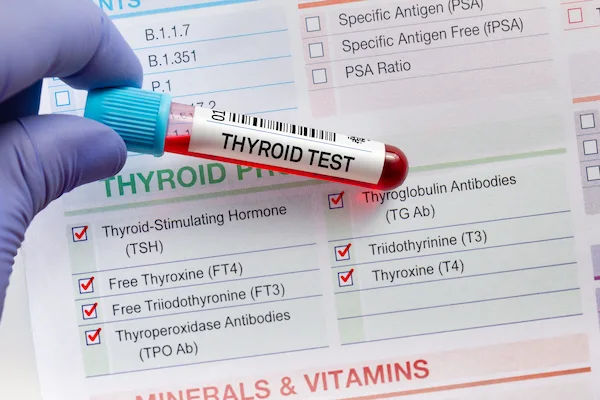Postprandial Blood Sugar Test
Know about the postprandial blood sugar test, what is it, why is it important, how it is done, normal versus abnormal levels and tips to manage postprandial blood sugar test.

Written by Dr. Mohammed Kamran
Reviewed by Dr. Rohinipriyanka Pondugula MBBS
Last updated on 5th Sep, 2025

Introduction
Managing blood sugar levels is crucial for overall health, especially for people with diabetes or those at risk of developing it. One important test that helps monitor blood sugar is the Postprandial Blood Sugar (PPBS) Test. If you’ve heard about this test but aren’t sure what it means or why it matters, this article will explain everything in simple terms.
What Is a Postprandial Blood Sugar Test?
The Postprandial Blood Sugar (PPBS) Test measures your blood sugar levels two hours after eating a meal. The word "postprandial" simply means "after a meal." This test helps doctors understand how your body processes sugar (glucose) after food intake.
Why Is This Test Important?
It is important because:
- Helps diagnose diabetes or prediabetes.
- Monitor how well your body manages blood sugar after meals.
- Check if diabetes medications or lifestyle changes are working effectively.
How Is the Test Done?
The test is simple and involves a small blood sample. Here’s how it works:
- Step 1: You eat a normal meal (or sometimes a standardised glucose drink).
- Step 2: Wait for two hours—avoid eating or drinking anything except water during this time.
- Step 3: A healthcare professional takes a blood sample (usually from your arm or finger).
The results show how efficiently your body processes sugar.
Normal vs. Abnormal PPBS Level
Who Should Get a PPBS Test?
You may need this test if:
- You have symptoms of diabetes (frequent urination, excessive thirst, fatigue, blurred vision).
- You have a family history of diabetes.
- You are overweight or obese.
- You have high blood pressure or cholesterol.
- You are pregnant (to check for gestational diabetes).
What Affects Postprandial Blood Sugar?
Several factors influence your PPBS levels:
- Type of food eaten (high-carb meals spike sugar more).
- Portion size (larger meals take longer to digest).
- Physical activity (exercise helps lower blood sugar).
- Medications (insulin or diabetes pills affect sugar levels).
- Stress and illness (can temporarily raise blood sugar).
Tips to Manage Post-Meal Blood Sugar Levels
If your PPBS levels are high, here are some ways to improve them:
1. Choose the Right Foods
- High-fiber foods (vegetables, whole grains, lentils) slow sugar absorption.
- Lean proteins (chicken, fish, tofu) help stabilise blood sugar.
- Healthy fats (nuts, avocados, olive oil) prevent sugar spikes.
- Avoid sugary drinks, white bread, and processed snacks.
2. Control Portion Sizes
- Eat smaller, balanced meals instead of large portions.
- Follow the plate method: Half veggies, one-quarter protein, one-quarter whole grains.
3. Stay Active
- A 10–15 minute walk after meals helps lower blood sugar.
- Regular exercise (30 minutes daily) improves insulin sensitivity.
4. Monitor Blood Sugar Regularly
- If you have diabetes, check levels as advised by your doctor.
- Keep a log to track patterns and adjust meals or medications.
5. Stay Hydrated
- Drinking water helps the kidneys flush out excess sugar.
- Avoid sugary sodas and fruit juices.
6. Manage Stress
- Stress hormones raise blood sugar—try deep breathing, yoga, or meditation.
When to See a Doctor?
If your PPBS test shows high levels, consult a doctor. They may suggest:
- More tests (Fasting Blood Sugar, HbA1c).
- Lifestyle changes (diet, exercise).
- Medications (if needed).
Final Thoughts
The Postprandial Blood Sugar Test is a simple yet powerful tool to understand how your body handles sugar after meals. High levels could indicate diabetes risk, but with the right diet, exercise, and medical guidance, you can manage it effectively.
Consult an Endocrinologist for Personalised Advice
Consult an Endocrinologist for Personalised Advice

Dr. Gayatri S
Endocrinologist
4 Years • Suggested Qualifictaion- MBBS, MD (Internal Medicine), DM (ENDOCRINOLOGY)
Nellore
Narayana hospital, Nellore

Dr. Venkata Rakesh Chintala
Endocrinologist
8 Years • MBBS,MD( GEN MEDICINE), DM ( ENDOCRINOLOGY)
Krishna district
Sanjeevani Hospital, Krishna district

Dr. Nithin Reddy Modhugu
Endocrinologist
6 Years • MBBS, MD (General Medicine), DNB (Endocrinology)
Hyderabad
Dr. Nithin's Endocrine Clinic, Hyderabad
(100+ Patients)

Dr. Shiva Madan
Endocrinologist
10 Years • MBBS , MD (General medicine) , DM (Endocrinology)
Bikaner
Sushma diabetes and Endocrine center, Bikaner
Dr. M.a. Mujeeb Afzal
Endocrinologist
13 Years • MBBS , MD (General medicine) , DM (Endocrinology)
Hyderabad
Diabetes Thyroid and Hormones (DTH) Clinic, Hyderabad

